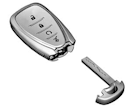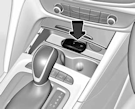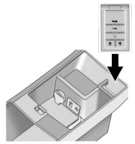How to Open, Start and Replace Fob Batteries in Holden Vehicles We have three videos for Holden owners with Help for Key Not Working This video is a compilation of five models. ………………………………………………………………………………………………………. Flip key key fob battery replace. ………………………………………………………………………………………………………. Traditional key fob battery replacement. Models covered include the Commodore, Acadia, Equinox, Spark and Trax. …
Tag: Spark
Permanent link to this article: https://dashboardsymbols.com/2020/11/holden-video-help-with-dead-key-fob-batteries/
Open a Holden with a Dead Key Fob
How to Open a Holden with a Dead Key Fob Getting into Your Holden But first, if you are already inside, click here for help getting started! Second, you’ll find video help here! Finally, if you need or want another manufacturer, click here. Retrieving the mechanical key Holden uses three key fob or transmitter styles. …
Permanent link to this article: https://dashboardsymbols.com/2020/10/holden-dead-key-fob-help-part-i-getting-in/
Start a Holden with a Dead Key Fob
How to Start a Holden with a Dead Key Fob Starting Your Holden But first, if you are still locked out, click here for help getting inside! Second, you’ll find video help here! Finally, if you need or want another manufacturer, click here. Holden uses three key fob styles (see Getting Inside) and many back …
Permanent link to this article: https://dashboardsymbols.com/2020/10/holden-dead-key-fob-help-part-ii-getting-started/
Holden Dashboard Symbols and Warning Lights
Holden Dashboard Symbols So, what is that light on your dashboard? What follows is easily the most complete list available of symbols and warnings that may appear in and on your car’s dashboard or instrument cluster. The following are warning lights and indicators found in vehicles built by Holden. Click the link to the right …
Permanent link to this article: https://dashboardsymbols.com/2020/10/holden-warning-lights-and-symbols/
Chevrolet Dashboard Symbols and Warning Lights
Chevrolet Dashboard Symbols So, what is that light on your dashboard? What follows is easily the most complete list available of symbols and warnings that may appear in and on your car’s dashboard or instrument cluster. The following are warning lights and indicators found in vehicles built by Chevrolet. Click the link to the right …
Permanent link to this article: https://dashboardsymbols.com/2019/06/warning-lights-and-symbols-seen-in-chevrolet-vehicles/
Permanent link to this article: https://dashboardsymbols.com/2015/07/recall-trend-highlights-electronic-and-safety-systems/
Start a Chevrolet with a Dead Key Fob
How to Start a Chevrolet with a Dead Key Fob Starting Your Chevrolet First, if you are still locked out, click here for help getting inside! Second, you can find video help here! Finally, if you need another manufacturer, click here. Chevrolet vehicles uses all three of the key fob styles made by General Motors. …
Permanent link to this article: https://dashboardsymbols.com/2015/01/general-motors-dead-key-fob-help-part-ii/





Recall Trend Highlights Electronic and Safety Systems
Recall Trend A disturbing trend appeared in the recalls (2015) we tracked since our last newsletter. Six recalls were issued involving automated electronic systems, including safety systems directly and indirectly. And they simply got more troublesome through the course of the month. First, GM recalled 51,000 Spark, Sonic models for radio, warning glitch. The warning …
Continue reading